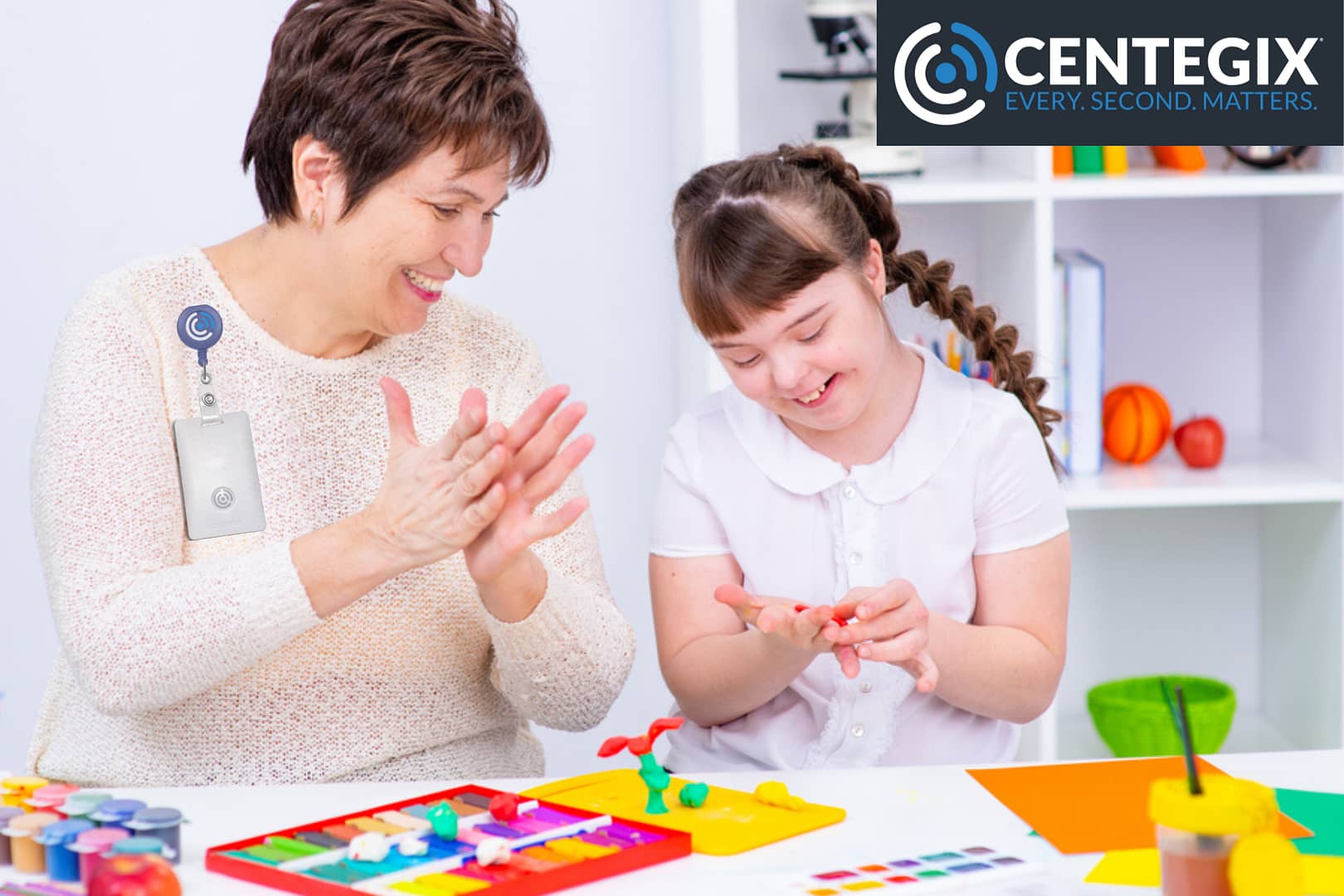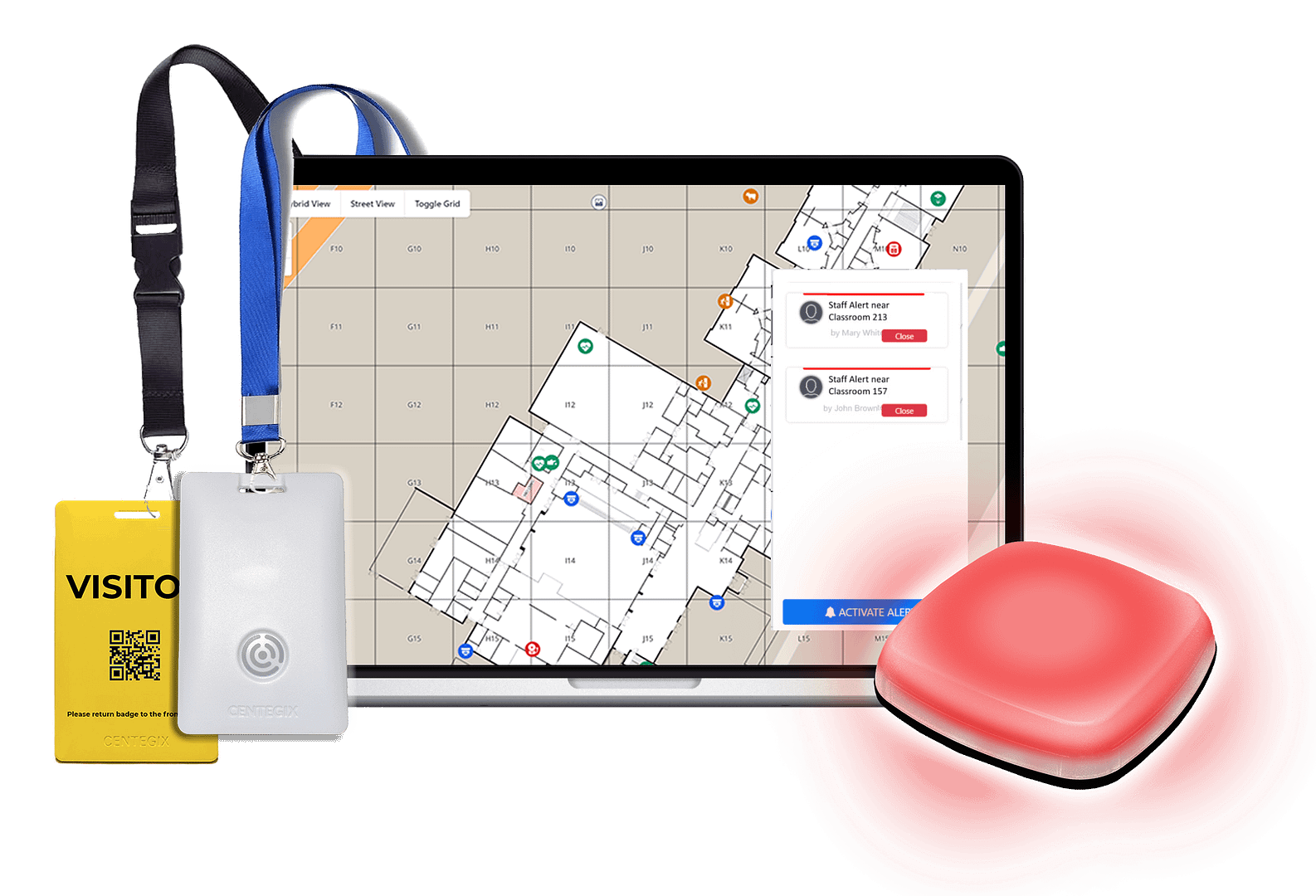Enrollment in special education programs has surged in the United States, doubling over the past forty years. The average caseload for special education programs ranges from 6 to 12 students for every full-time special needs teacher. Meeting those students’ needs is more complicated when the national teacher shortage makes hiring and retaining special education teachers more difficult. Protecting students with differing ability levels also requires specialized resources. Some schools find discreet incident response technology helpful in caring for and protecting their most vulnerable students and the educators in those classrooms, particularly during emergency situations.
Under the Individuals with Disabilities Act (IDEA), schools must provide an appropriate learning environment under the least restrictive conditions. This is essential to fully serve students in special needs programs. It’s not an easy requirement to meet, considering that 15 percent of all public school students qualify for services under IDEA. Last year, IDEA students topped 7.5 million, an all-time high. The most significant percentage of IDEA students (about a third) have specific learning disabilities; about one-fifth have speech or language impairments, and 13 percent have autism. Intellectual disabilities, emotional disturbances, and developmental delays combine to make up another 17 percent.
Mark Martin, Superintendent of Meade County Schools and former special education teacher in Kentucky highlighted this uptick in the special needs student population: “You’ve got so many more special needs students now than maybe 30-40 years ago. Even though many are medically fragile, they are still able to go to school now… There’s a lot of medical need, and there’s a lot more emergencies now because of that very fragile population.” Because of the wide range of needs and abilities, special education requires individualized learning plans for each student.
Safety Considerations in Special Education Classrooms
As with educational resources, many students enrolled in special education programs require specific safety considerations. Some of these considerations necessitate hiring a specialist, which is even more challenging in a national teacher shortage.
Common considerations include:
-
- Heightened health concerns
- Mobility issues
- Cognitive challenges
- Specialized equipment
- Adverse reaction to stimulus
High Rate of Behavioral Incidents Worsen National Teacher Shortage
Not only do special education students have additional safety needs, but the behavioral incidents that can accompany common neurological disorders create their own safety concerns. In most cases, the student does not intend to engage in inappropriate behaviors. They are simply trying to relieve stressors that they may not have the faculties or resources to do in socially acceptable ways.
Special education teachers report being most stressed by the following behaviors:
- Kicking, hitting, and biting
- Suicidal talk
- Screaming
- Eloping/fleeing
- Self-harm and banging head
Special education teachers are trained to handle these issues, but many face significant burnout without the right support. In the past, many school administrators alleviated teacher burnout by simply hiring additional staff, therefore reducing class sizes and student-to-teacher ratios. As the U.S. faces a national teacher shortage, innovative solutions that help teachers feel supported are the next best thing. By installing school safety technology featuring wireless panic buttons, teachers can request help with the push of a button and know someone is on the way no matter the scope of the emergency. Elopement is one of those emergencies that can be especially dangerous for teachers and students. A teacher must leave other students to pursue the fleeing student, who is in danger of being injured in traffic or getting lost.
An elopement prevention plan may involve multiple staff members. The plan aims to prevent a student from leaving the classroom or campus while still responding in a way that provides support and learning opportunities for the student.
When teachers are equipped with wearable panic button technology, responders are instantly alerted and provided with the precise location where assistance is needed. In challenging situations, such as a child attempting to leave the playground, a teacher can request help by simply pressing their badge, ensuring they do not need to abandon the supervision of other students on the playground.
Special Education Teachers Deserve Support
There’s no question that special education teachers are hard to find during a national teacher shortage. In March 2024, more than half of public schools reported having unfilled special education positions. Special education teachers need to feel supported when they enter these classrooms to provide each student with the least restrictive, most individualized care possible while keeping the others safe.
“I just felt like I couldn’t meet all of my students’ needs with the resources and support that I had, no matter how hard I worked,” Elizabeth Bettini told EducationWeek. Bettini is an associate professor of special education at Boston University and previously taught special education in K-12 schools. In these moments of crisis, big or small, special education teachers must engage with their students in new, sometimes counterintuitive ways, which often makes them more vulnerable. Investing in safety and support is one step toward combating the national teacher shortage. Supporting your teachers will help prevent burnout and turnover in your special education classrooms.
Mark Martin said the following about investing in the CENTEGIX Safety Platform: “I love the fact that it empowers everyone to be on duty. We have a saying on our team that we’re all on duty when it comes to safety. This actually lives that message out. I love the fact that it can be for everyday situations, whether it’s an emergency or not, and honestly, that peace of mind that it gives our whole school community when it comes to that worst-case scenario.” Timely intervention and proactive responses are key when dealing with special needs students. Mr. Martin recounts the following situation that ended in a safe and quick deescalation in his school: “I know how important it is to be proactive. A student was experiencing a crisis in the library, which could have turned into a safety crisis. The class assistant hit their button, and within 20 to 30 seconds, the assistant principal was there and de-escalated the situation.”
The CENTEGIX Safety Platform™: Safety and Support for Special Education Teachers and Students
The CENTEGIX Safety Platform™ gives teachers the resources they need to request assistance in real time, using precise location data to initiate an immediate and appropriate response. The system works discreetly, so incident escalation is never a concern when reporting.
“Last year at this time we had 43 incidents of having to restrain a student. Restraints need to be documented with the state. During last school year, we added in Ukeru training and “pads” to help handle escalating situations without the need for physical restraint. We also trained our staff on CPI (Crisis Prevention Intervention) strategies to verbally de-escalate behaviors. A key component in allowing these strategies to work is having an early intervention. The CENTEGIX 3-button push provides an early notice which is needed for early intervention. This year we have only 1 restraint in the same time period.“Superintendent, Jacksonville School District 117, IL
The system combines CrisisAlert wearable mobile panic buttons, Safety Blueprint for real-time emergency response mapping, visitor management to know who is on your campus at all times, and reunification to ensure everyone is safe and accounted for in the event of an emergency.
Why CrisisAlert™?
- CrisisAlert is a wearable badge that teachers and staff can use to get help with the push of a button. The badge can both signal a need for emergency assistance or a campus-wide lockdown.
- Because the badges are silent when used to request help, students are not alerted. The situation can be addressed without escalation or increased sensory input, as would be the case with intercom or walkie-talkie communication.
- The badge is always on and accessible to teachers, allowing them to remain focused on the student or emergency situation at hand. By pressing the CrisisAlert button three times, requesting help takes just seconds.
Bob Davis, a special education teacher at Meade County High School, described his experience using CrisisAlert: “As a behavioral special education teacher, it is a comfort when you need assistance with a student. You have [the] immediate help needed to de-escalate a situation. For all teachers working with students, the response time is much better having our CENTEGIX badges.”
The CENTEGIX Safety Platform Protects Special Education Students and Teachers
Whether responding to a personal behavior or a campus-wide crisis, every second matters. The CENTEGIX Safety Platform™ provides teachers with the resources they need to feel safe and supported. It also gives administrators the tools they need to empower and retain exceptional special education teachers. See how a discreet emergency notification system can benefit your special education teachers and students.












